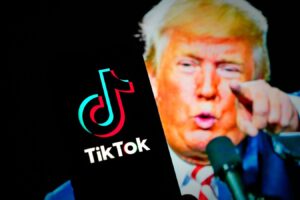More and more popular tourist destinations in Europe are introducing cruise ship restrictions and passenger taxes as they face increasing pressure from overtourism
Some are cutting the number of liners permitted to dock each day, while others have imposed levies on passengers.
For travellers wanting to take a cruise but looking to avoid contributing to the negative impacts of oversized vessels, tour operator Riviera Travel has shared how to responsibly visit destinations by water.
European destinations bring in cruise ship taxes
Norway recently announced plans to implement a tourist tax on cruise passengers. Starting next summer, municipalities will be able to apply a three per cent levy on overnight stays and cruise ship arrivals.
From next year, the French Riviera resort of Cannes is also imposing what its city council calls “drastic regulation” on cruise ships, halving the number of very large ships allowed in its harbour and capping the daily number of passenger visits at 6,000.
The nearby Mediterranean city of Nice announced limits on cruise ships earlier this year, which came into force on 1 July.
The Greek islands of Mykonos and Santorini also brought in a tax on 1 July, with cruise ship passengers now required to pay €20 during peak season.
And Venice banned large ships in 2021, followed by Barcelona in 2023. Amsterdam is also gradually phasing out cruise ships in its harbour, aiming for an outright ban by 2035.
How to cruise around Europe responsibly
Will Sarson, product director at leading cruise and tour operator Riviera Travel, says travellers looking to cruise responsibly don’t have to avoid destinations with restrictions or taxes.
“While cruise ship policies pose restrictions for larger ships such as ocean cruises, there are alternative ways of visiting these locations by water,” he says.
The answer is to choose smaller, less damaging types of boats.
See Venice’s sights on a yacht
Venice has banned large cruise ships over 25,000 gross tons from entering its historic Giudecca Canal, with ships now diverted to alternative ports like Marghera.
“Fortunately, there are alternative ways to visit Venice by water,” Sarson says. “Sail in style in a smaller vessel like a yacht. A yacht cruise is the perfect way to explore Venice as you sail to the historical city on board a luxury vessel.”
On this kind of boat, you can get up close to iconic sites like the Doge’s Palace, St. Mark’s Basilica and the Bridge of Sighs – now off limits to larger ships.
Sail around the Balearic Islands on a clipper cruise
The Balearic Islands are also among the destinations that have implemented restrictions on large cruise ships. Palma de Mallorca has limited cruise ship arrivals to three per day, with only one allowed to carry more than 5,000 passengers.
“While this restriction may be an issue for larger vessels that hold thousands of passengers, there are alternatives,” Sarson says.
“A Clipper cruise [a fully-rigged tall ship] to the Balearics promises an unforgettable trip as you sail on a charming vessel that takes you back to the nautical golden age for an authentic sailing experience.”
On this kind of boat, you have no docking restrictions and you can hop off to visit Palma’s Gothic cathedral, stroll through the city’s Old Town, and appreciate the views from the seafront.
Take a sailing trip to Dalmatia and Dubrovnik
To combat overtourism, Dubrovnik limits cruise arrivals to two ships daily, with a combined maximum of 8,000 passengers.
However, this doesn’t have to be a deal-breaker for visiting this Croatian city, according to Sarson. Instead, opt for a sailing trip on a yacht, like Riviera Travel’s Dubrovnik & Splendours of Dalmatia.
This way, you can journey down Croatia’s sun-drenched Adriatic coastline before heading to Dubrovnik and visiting its Old Town.
Read the full article here

















